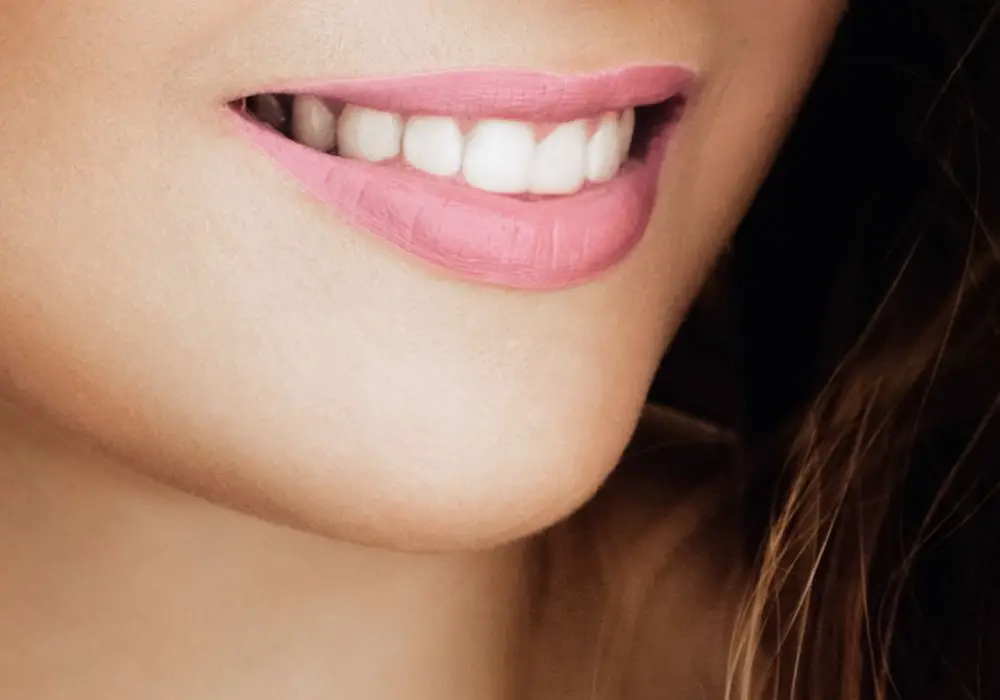Having a bright, white smile is an admirable goal – but taken too far, the quest for ultra-bright teeth can look unnatural and artificial. So what is the ideal level of whiteness for a healthy, attractive smile?
Factors That Influence Natural Tooth Color

The natural shade of teeth varies from person to person based on a number of factors:
Genetics
Genetics plays a major role in tooth color, determining the:
- Thickness and translucency of enamel
- Shade and abundance of dentin tissue underneath
- Size and position of teeth in the jaws
Some people inherit genes for thicker, opaque enamel that masks yellow dentin tones. Others may have genetics for thinner, translucent enamel that allows more yellow-gray dentin to show through. Smaller teeth can sometimes appear darker as more of the surrounding gums show through.
Dentin Properties
- Dentin makes up the bulk of the tooth underneath the enamel and contains most of the tooth’s nerves and pulp. Dentin ranges in color from light yellow to grayish brown. The darker and more abundant the dentin, the darker the overall tooth color will be.
- As people age, secondary dentin develops in layers, potentially darkening the tooth over time.
Enamel Properties
- Enamel is the hard, protective outer surface of the tooth. It is semi-translucent with an opalescent white color.
- The thickness and mineral content of enamel determines its opacity. Thicker, highly mineralized enamel blocks out more of the underlying yellow dentin.
- Enamel thins over time as acidic foods and abrasion wear it away, allowing more dentin to show through.
Staining
Teeth can become stained on the enamel surface and in the dentin over time from foods, drinks, tobacco, medications, and poor oral hygiene. Common staining culprits include:
- Coffee, tea, and red wine
- Berries, tomato sauce, and soy sauce
- Tobacco smoke and chewing tobacco
- Chlorhexidine mouth rinse
- Metal salts and minerals
Trauma and Decay
Cracks, chips, and structural damage to teeth from trauma or decay can lead to yellowing and darkening of the affected areas.
Perceptual Factors in Whiteness

The perception of tooth color is relative. Teeth will appear whiter or brighter when:
- Viewed against a darker lip color
- Framed by skin with more melanin pigment
- Surrounded by red color from lips
- Compared to graying hair
Conversely, teeth can look more yellow or duller when:
- Placed against bright white clothes or backgrounds
- Viewed under yellow incandescent lighting
- Next to very white veneers or crowns
Our eyes tend to adjust and perceive things relative to other colors and lighting in the environment.
Risks of Unnaturally White Teeth

Pursuing artificial whiteness can come with consequences:
Damage to Enamel
Excessive bleaching and abrasion wears down the protective enamel layer over time. This can permanently damage and thin the enamel, resulting in increased sensitivity, cracks, and decay.
Gum and Root Irritation
Whitening gels that come in contact with gums during treatment can cause burns, inflammation, and infection of the soft tissues.
Yellowing Rebound Effect
Bleached white teeth that do not address underlying stains will start to revert back to their original shade within 6-12 months. This leads to a cycle of constant re-whitening.
Artificial Look
Ultra-bright white teeth risk looking obviously fake and distracting – almost like dentures. This draws attention to the teeth in an unflattering way. Translucent depth is lost.
Ideal Levels of Whiteness

There are a few guidelines to follow for a naturally attractive smile:
- Whiteness should match the whites of the eyes, which also contain slight blue/yellow pigments. This looks pleasantly harmonious.
- Teeth should maintain some subtle translucency and depth, not just opaque flat white.
- Upper teeth can be slightly whiter than lower teeth, which are more prone to yellowing.
- Veneers, crowns, and bridges should not stand out as jarringly brighter than surrounding teeth.
- Focus on uniformity of color, not extreme whiteness. Variations in shade should be mild.
Safe and Effective Whitening Methods

Here are some smart tips for moderately brightening your smile:
Professional Cleanings
Regular dental cleanings every 6 months prevent stains from setting in and remove hardened tartar. Be sure to address any areas of lingering tartar.
Whitening Toothpaste
Look for brands with silica or baking soda for mild abrasion to lift surface stains without damaging enamel. Avoid highly abrasive charcoal toothpastes.
Diet and Habits
Reduce staining from coffee, tea, red wine, tobacco, and dark berries. Drink with a straw to minimize contact with teeth. Rinse with water after consuming.
Crunchy Fruits and Vegetables
Crisp fruits and vegetables like apples, carrots, and celery act as natural scrubbers to lift surface stains when you chew.
Brush with Baking Soda
The mild abrasiveness of baking soda can effectively clean teeth without stripping enamel like commercial whitening toothpastes.
Whitening Rinses
Swishing daily with an oxidizing peroxide rinse can lighten teeth a couple shades without sensitivity.
Whitening Strips
Whitening gels on strips or trays can brighten teeth up to 3-4 shades if used correctly, but be wary of increased sensitivity from overuse.
Dentist-Dispensed Trays
Custom dental trays allow controlled doses of whitening gel applied on the teeth only. This prevents gum irritation.
Air Polishing
Air polishing with baking soda at the dentist’s office deeply cleans enamel to lift stains from microscopic pits and fissures.
Other Procedures
Bonding, crowns, and veneers can mask intrinsic stains but should stay within the natural tooth shade range.
Conclusion
While a bright white smile can positively impact appearance and confidence, avoid over-whitening teeth to an unnatural degree. Use the whites of the eyes as the best guide to a natural-looking, attractive smile. Focus on uniformity and rely on safe, conservative methods to moderately enhance your natural tooth shade.
FAQ
How white should teeth be compared to eyes?
Teeth should match the general whiteness of the whites of the eyes. Going beyond this into opaque bright white looks artificial. Matching the eyes maintains some translucency and depth.
Do whitened teeth stay white permanently?
No, teeth whitened through surface bleaching will gradually revert back closer to their natural shade as stains rebuild in 6-12 months. This leads to constant re-whitening to maintain an artificial white.
Is baking soda whitening safe for enamel?
Yes, baking soda is a mildly abrasive cleaner that can lift surface stains effectively without thinning the enamel like commercial whitening toothpastes which contain more abrasive silica.
How can staining foods and drinks be consumed safely?
Drink staining beverages like coffee through a straw to minimize contact with teeth. Rinse your mouth with water afterwards. Brush shortly after consuming. Get regular cleanings to prevent stains from setting in and hardening on the enamel.
What causes sensitivity when whitening teeth?
Whitening gels degrade enamel over time, allowing irritation of the dentin underneath. Use the minimum concentration and duration of gel needed. Custom dental trays prevent over-exposure of gums. Rinse with fluoride to re-mineralize enamel.







